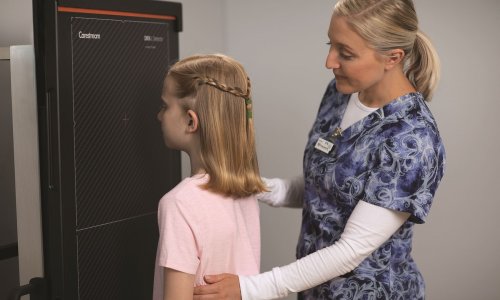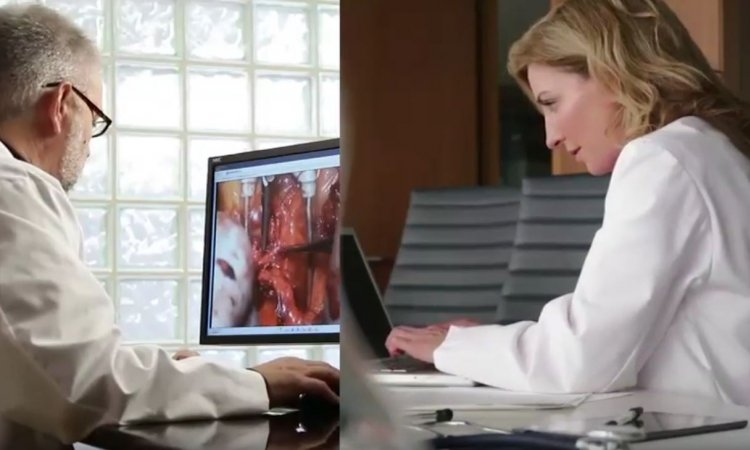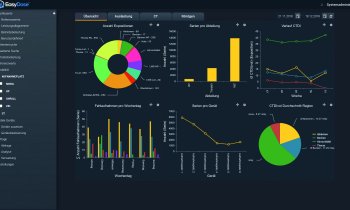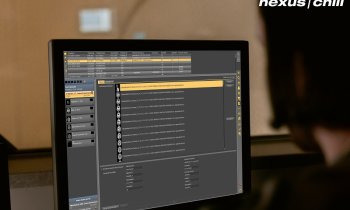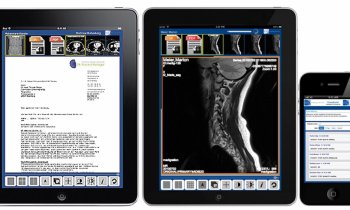One system covers all
How Belgium’s UZ Gent managed to combine a vast network of multimedia
With over 6,000 employees serving over 50 different departments, the 1,062-bed university hospital UZ Gent is Belgium’s largest single hospital campus. Managing all the imaging data from such a huge institution – as well as establishing a network with about 30 partner hospitals and other caregivers – suggests a quite tricky task. Tricky, but not impossible, as Professor Bart Sijnave, Chief Information Officer at UZ Gent, explained during an interview with Meike Lerner.
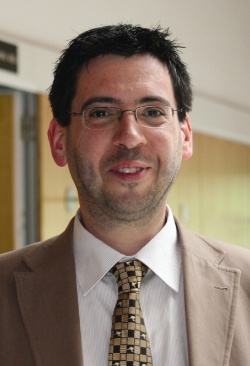
What he needed was a hospital-wide system that was more than just a bolted together jumble of software. His recipe for success: Good preparation, a transformation in working practice and the right partner:
"The basic work for centralised image data collection was carried out about five years ago when the UZ Gent – like many other hospitals – switched from analogue to digital. The implementation of a PACS was quite a huge success because it was immediately connected to our Electronic Health Record System as well as the RIS. At the same time, we invested a lot into learning and changing management aspects – a quite important point, because observing radiological images at the computer is something you must become used to and a digital workflow is completely different compared to working the analogue way.
Once we experienced that, we could gain a huge increase of workflow and efficiency and we began to think about connecting other sections, modalities and medical equipment to the PACS.
Of course, there was a lot of prospective management to do, because not all disciplines had the same idea about combining their modalities. So we began to look at combining all the different data stored in different PACS solutions into one central and hospital wide PACS system. Then again, at the same time we had a big chance to build a network of hospitals, which means sharing information with other hospitals and general practitioners (GP) or homecare institutions. In this context, we faced the problem of sharing images from even more PACS vendors.
So, we needed to think broader and had to answer different questions, such as: How do we get these images out of the hospital to the GP or to other hospitals, knowing that diagnostic images not only have a couple of kilobytes but mega- and gigabytes that must be transferred to have full precision of the images?
At that time, looking into the market there was only one system (in the Netherlands) that provided a general imaging exchange. However, it was a system where the images first had to be centralised in one place before they could be distributed. This was not what we wanted -- it was against our view of modern healthcare, meaning the data source remains where it is created. Also, not to make data copies, whether in pure text data or imaging data, to ensure that you always connect to the latest information.
Then, two years ago, we began to experiment with our own implementation to get these images distributed without having to centralise them. However, after a short time we recognised that our self-made solution was good enough for viewing, not for diagnostic purposes. We concentrated on the original question, namely to combine all modalities in our own hospital and we started a tender for a hospital-wide PACS system. We chose Carestream Health for a solution because it had a solution that not only covers the needs of the hospital itself but also to share images between different care givers.’
Central image storage
Within our Electronic Patient Platform we have what we call the Mediacentre, where all media information, such as radiology images in DICOM, as well as JPGs and sound files are stored.
We only store data from our hospital itself, not data from the other hospitals. The only thing we track is that there are data in another hospital. When someone needs data from another hospital, and is connected to our portal, then our web service contacts the other hospital in the back-end and requests the data and then streams the images up to the requester.
The advantage is that you are always sure to get the latest images. When you start copying data onto the central system, and the other hospital forgets to stream up the most recent data, then you are working with old data, which is dangerous, of course.
For our external partners a system like ‘SuperPACS’ can have several advantages, for example regarding second opinions that can be performed easily and just in time. For them it could also be a gain that they can access the system and obtain the images from the other connected hospitals and they have more easy access to this information even if the patient has forgotten his DVD. They can access the data immediately online. Internally, of course, their gain depends on their structure. If they have not changed their way of working their benefit is very limited.
So, a concluding message when thinking about such a centralised PACS: It is not only an IT system on top of the current way of working – it is a new way of working that needs a completely new structure!"
Carestream:
‘The archive provides a single access point to clinical images and other stored clinical information, such as video clips, laboratory and biopsy results. Two servers provide the digital storage needed -- a requirement that is growing by approximately 100 terabytes a year as imaging quality improves and evolves.
This growing reliance on digital storage and a move away from discs and tapes to a central storage unit necessitates a robust Disaster Recovery policy and a Business Continuity plan. Both are in place at UZ Gent -- there are two redundant data centres and, in the event of a serious failure, the hospital can retreat to local access only, using a direct connection to scanners.’
29.12.2010
- data management (585)
- DICOM (73)
- eHealth (226)
- EPR/EHR (149)
- interoperability (70)
- IT (890)
- PACS (176)
- RIS (62)
- telemedicine (272)
- teleradiology (87)




